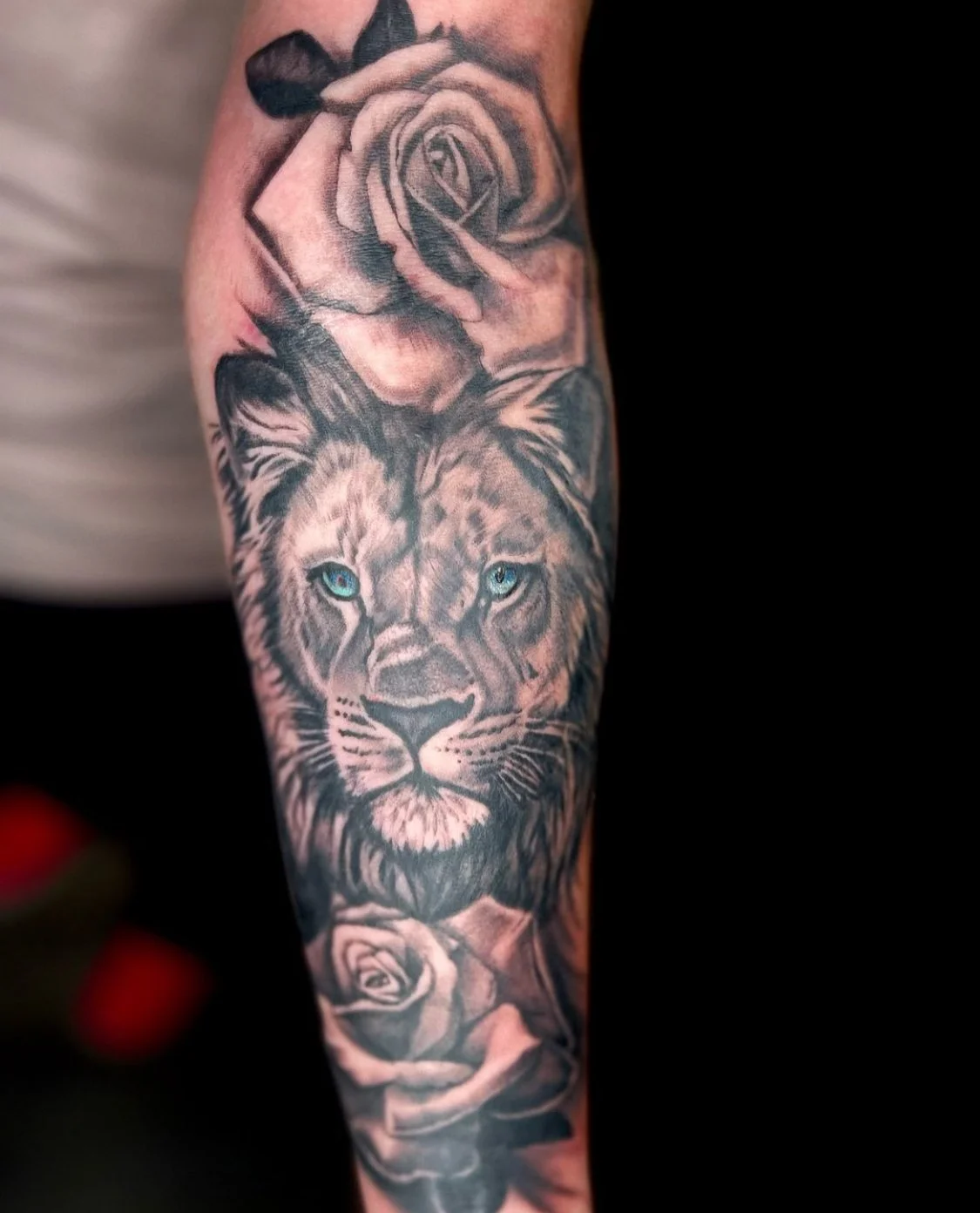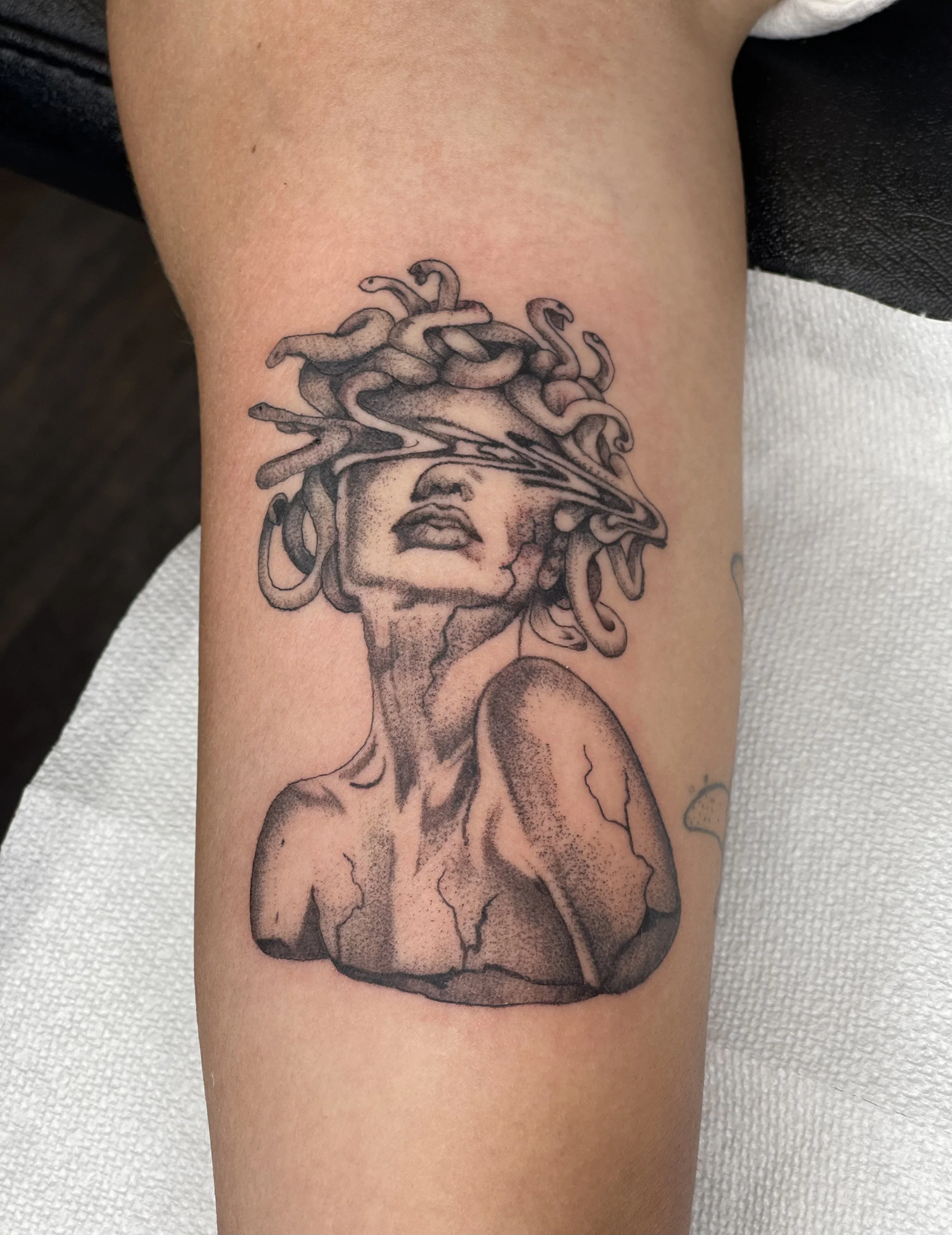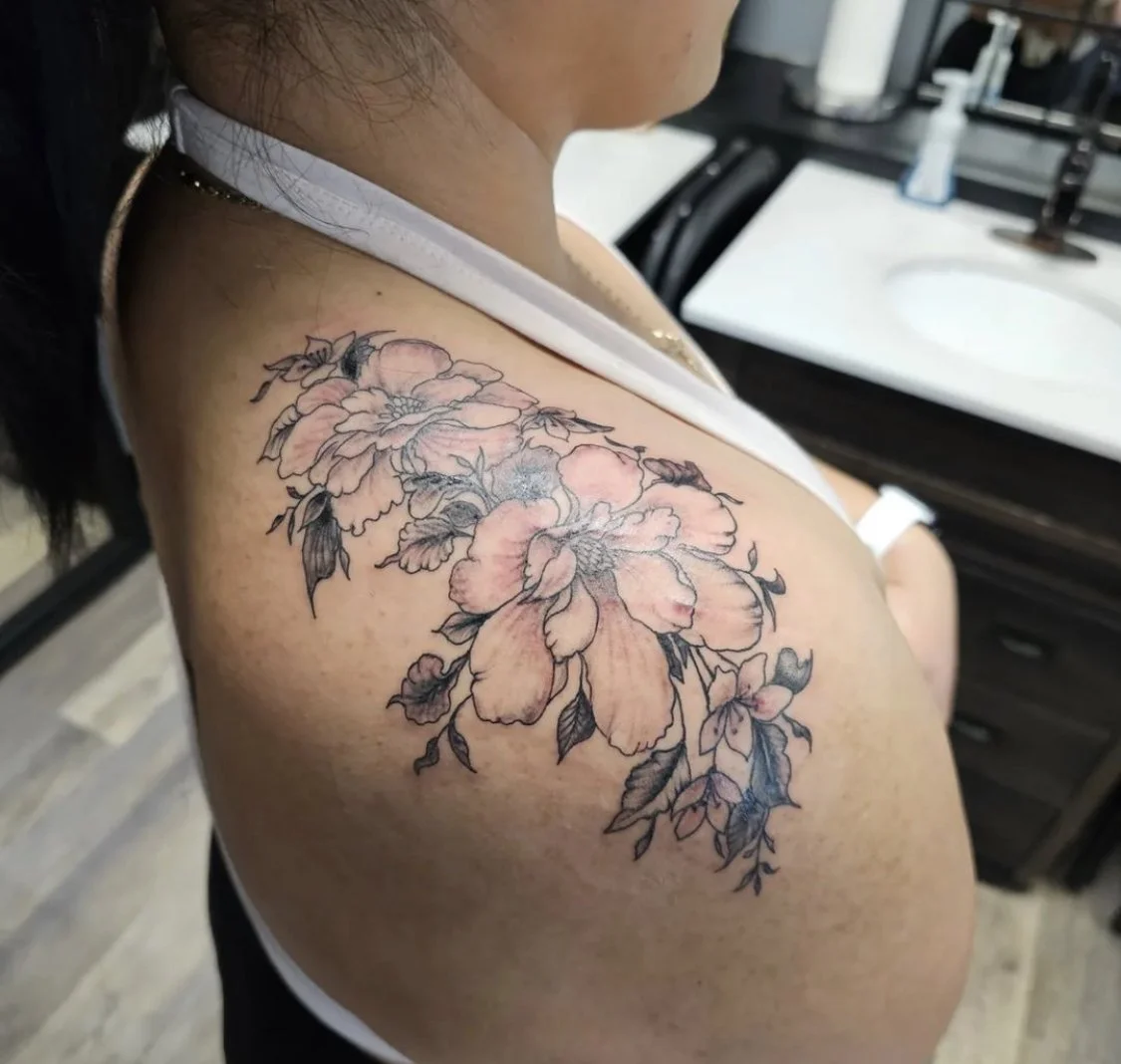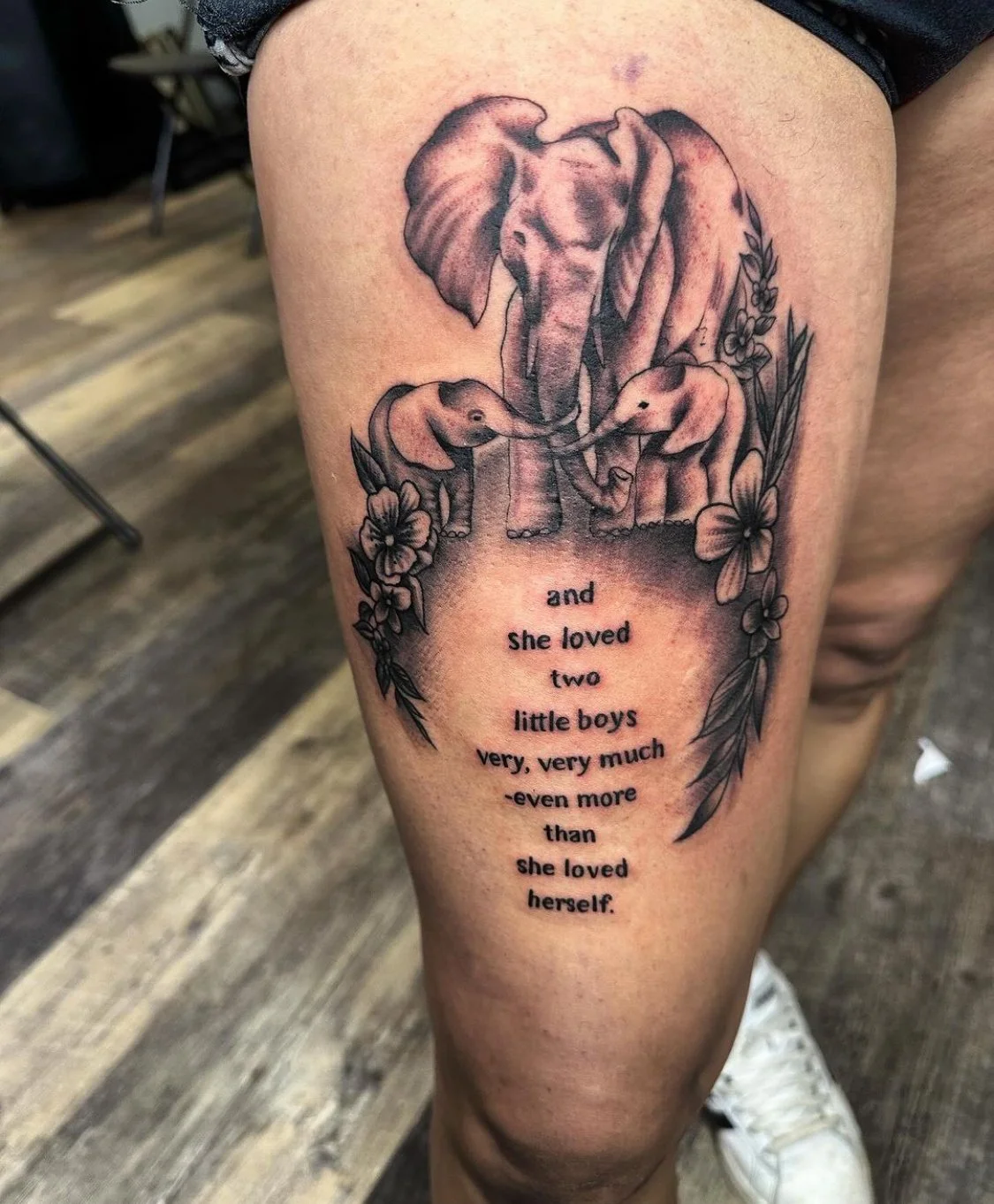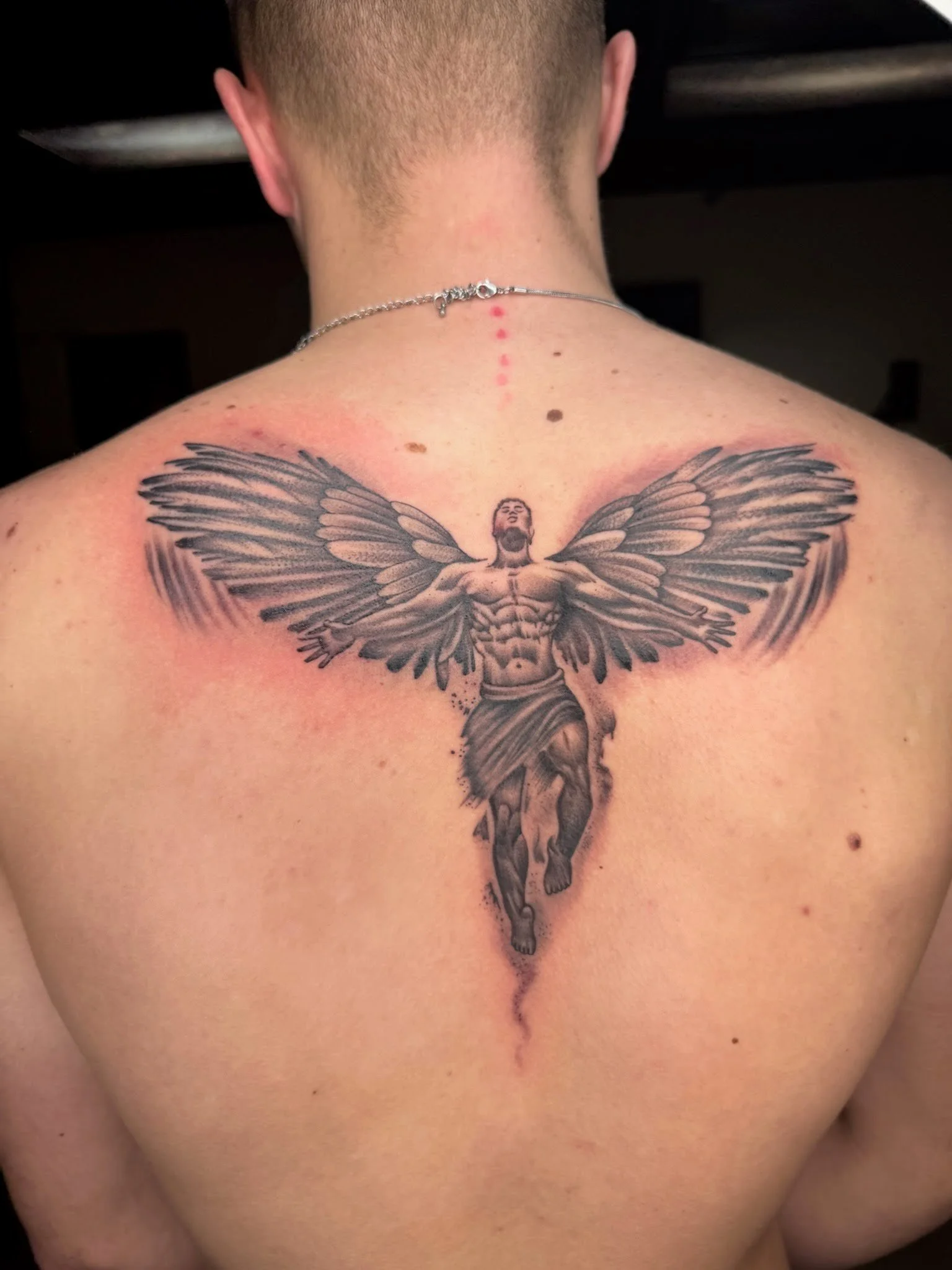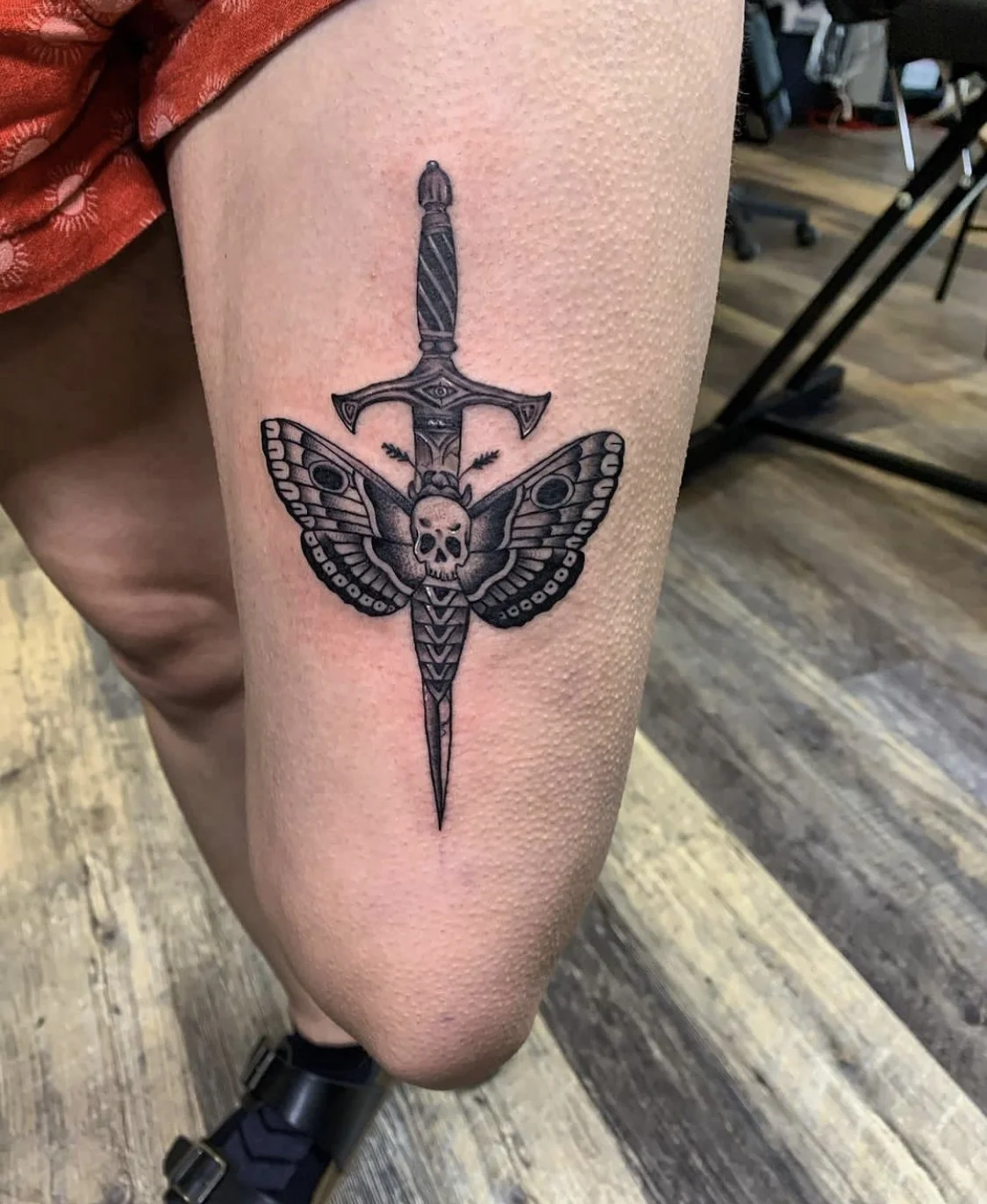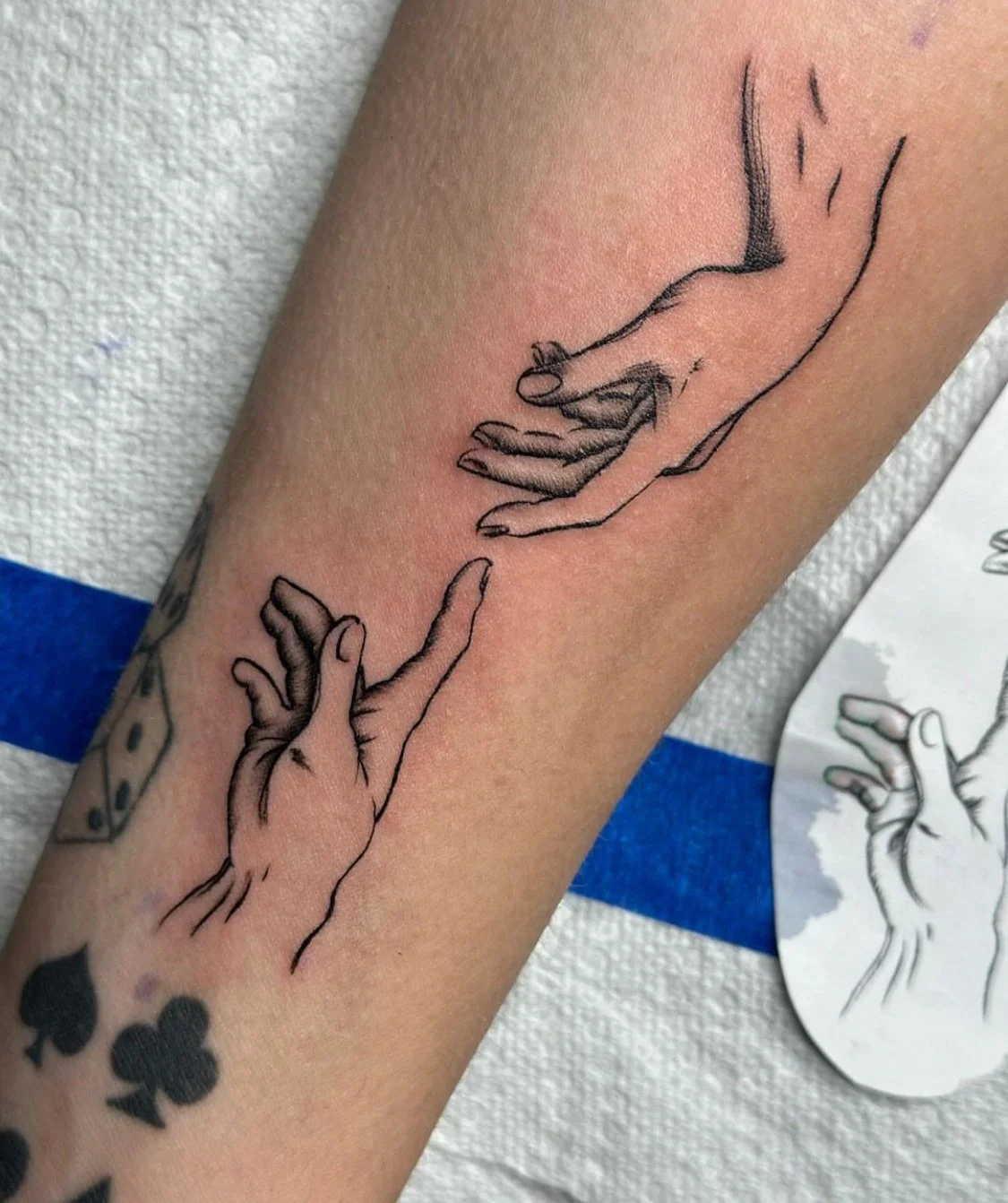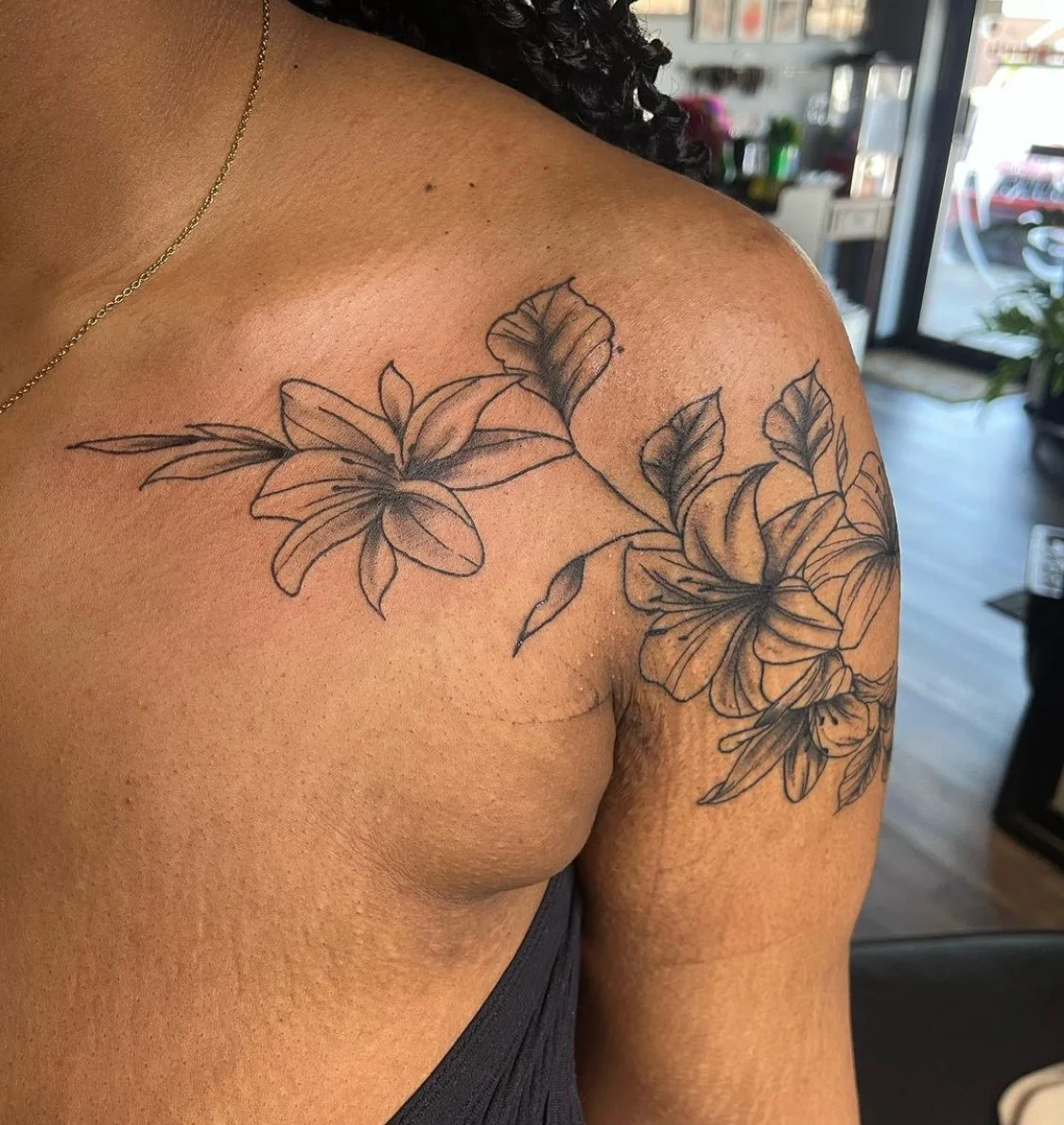Black and Grey Realism Tattoo vs. Other Styles: Key Differences Explained
Most tattoos say something. A black and grey realism tattoo says it exactly how it happened. No metaphors. No stylized dodge. Just you, a machine, and a memory sharp enough to stare back.
While other styles flirt with symbolism or flex with flair, realism doesn’t care if you’re ready. It just tells the truth—quietly, and with ridiculous technical precision.
And here’s the bit no one says out loud: not everyone’s built for it. This isn’t for people chasing trend. It’s for people who want permanence with receipts.
We’re about to put realism side by side with other styles—and show you why it doesn’t just differ—it disarms.
What Defines a Black and Grey Realism Tattoo?
Let’s clear something up right now: black and grey realism tattoos aren’t “simpler” just because they skip the color wheel. If anything, they require more restraint, more control, and frankly, more nerve.
You get no second chances here. No color distractions. No shortcuts. Just black ink, skin, and an artist trying to pull off subtlety in a medium built for permanence.
The technical reality of a black and grey tattoo design:
Shading isn’t optional. It’s the whole show. Artists dilute black ink into varying degrees of grey, building layer after layer of contrast until an image appears that looks like it was ripped out of a black-and-white photo lab.
Fine-line detailing is brutal. There’s no hiding wobbles or second-guessing. The detail work here? It's often done with needles thinner than a mechanical pencil lead.
Contrast is your only real weapon. Every highlight, wrinkle, eye glint, or cheekbone needs to be teased out using light and shadow alone.
Now, if you're thinking, "Well, how's that different from color realism?"—good question.
The short answer: Color realism uses saturation to carry weight. A skilled color artist can rely on warmth, hue, and saturation to sell the depth. But in black and grey realism, none of that exists. You either pull it off with clean grayscale layering or end up with something that looks like a smudged newspaper clipping from 1994.
So yes, this black and grey tattoo style demands an entirely different level of focus. And no, it’s not “just a phase.” It's been around since prison cells first became art schools, and now it sits in the portfolios of some of the most technically insane artists on the planet.
Popular Black and Grey Tattoo Styles
If you're about to get one of these, you're not “trying ink” — you're getting your skin archived.
Black and Grey Tattoo Sleeve
Getting a full black and grey tattoo sleeve is about commitment. These large-scale designs often cover the full arm, but every inch matters. Each piece has to speak to the next, not just look good in isolation.
Most of the time, sleeves tell a story—but not the Hallmark kind. We’re talking timelines, losses, achievements, religious totems, or visual philosophies. And guess what? A bad sleeve screams forever.
Designing this kind of custom tattoo takes time, trust, and frankly, some chemistry between artist and client. You don’t Google your way into a black and grey sleeve—you build it with someone who can read your skin like a book and then rewrite it.
Fine Line Black and Grey Tattoo
If you’ve ever seen someone’s wrist tattoo look like it was printed by a laser, that’s probably fine line work. This isn’t about drama. It’s about precision so sharp it makes surgeons wince.
Fine line black and grey tattoos play with white space, micro-detailing, and line consistency. Think botanical stems, ancient sigils, delicate bone structure outlines—basically, art that whispers instead of shouts.
Also, this style is unforgiving. There’s no ink dump to mask bad form. It’s pure technical trust fall. And it has to hold over time, so your artist needs to know how ink ages—not just how it looks fresh off the stencil.
Photorealistic Tattoo
This is where the medium starts talking back. Photorealistic black and grey tattoos aim to mimic actual photographs—down to reflections in the eyes, strands of hair, the exact curve of a lip.
This isn’t “close enough” work. It’s "I can’t believe that’s a tattoo" work. The margins are razor-thin, especially in black and grey. One shading error and your grandmother’s memorial piece suddenly looks like an unslept ghost from a bad Victorian novel.
Here’s what most people miss: these tattoos don’t just require talent. They require endurance. Some of these sessions run 6–8 hours. More if you flinch. Artists have to maintain needle consistency the entire time, or the depth breaks and it loses the illusion.
That’s why not every artist will even take these on. And the good ones? They’re booked for a reason.
Black and Grey Portrait Tattoo
Let’s get one thing out of the way: a black and grey portrait tattoo isn’t just “realistic.” It’s a psychological minefield.
When someone sits for a portrait piece—whether it’s their child, partner, parent, dog, or celebrity obsession—what they’re really asking is: Make it look like them. And not in a vague way.
This style means capturing likeness, emotion, and tone without access to skin tone or color correction. Every wrinkle, shadow, and nuance has to be nailed using only shading and negative space.
The bar here is sky-high. And failure isn’t a small hiccup—it’s a forever reminder that someone misread your face. Or worse—your intention.
But when it’s done right, a black and grey portrait tattoo becomes one of the most emotionally precise pieces someone can wear. It’s not just resemblance—it’s recognition.
The Artistic Process: Finding the Best Black and Grey Tattoo Artist
You don’t hand your face—or your loved one’s face—to just anyone with a coil machine and a flashy Instagram feed. If you’re getting a black and grey realism tattoo, and the artist fumbles the shadows on a photorealistic tattoo of your grandmother? Congrats, you’ve now got a haunted house on your bicep.
What to Look for in an Artist
Not every “tattoo artist” should be touching realism. In fact, most shouldn’t.
To get it right, the best black and grey tattoo artist needs more than a decade-old stencil template and some creative buzzwords. They need receipts—real portfolios, real healed work, and actual knowledge of skin tone, ink aging, and micro-shading techniques.
If the only thing you’re seeing is a filtered photo taken ten minutes after the wrap came off? You’re not looking at healed work. You’re looking at false confidence. Ask for healed pieces. Ask how they handle scar tissue. Ask if they’ve done a monochromatic tattoo on your skin type. If they pause, move on.
There’s no such thing as “good enough” in realism—there’s only “nailed it” or “never leaving the house in short sleeves again.”
Don’t Skip the Consultation
The consultation isn’t paperwork. It’s where you find out if this person can actually translate your reference into something you’ll still be proud of five years from now. If they’re rushing you through design, brushing off questions, or pushing a generic flash sheet when you came in with black and grey tattoo ideas, take that as your green light to bail.
A solid consultation should make space for:
Placement realities (no, that hyper-detailed photorealistic tattoo won’t work on your knuckle),
Real talk about how light affects black ink,
And an honest breakdown of what’s possible with your skin, pain tolerance, and budget.
You’re commissioning permanent artwork. Treat it accordingly.
Aftercare That Doesn’t Suck (Or Ruin Your Tattoo)
You can pay $2,000 for a masterpiece, and then trash it by dry-healing in the sun like a piece of roadkill jerky. Don’t.
Here’s what works:
Use actual soap (fragrance-free, antimicrobial), not whatever you find in your gym bag.
Moisturize lightly—this isn’t a lotion commercial.
Avoid the sun like it owes you money. UV radiation is a realism tattoo’s silent killer.
Listen to your artist. If they say avoid swimming, don’t just “be careful.” Waterlogged healing = washed-out shading.
Black and grey realism tattoos need post-ink attention. If you want the shading to hold and the detail to stay crisp, give your skin the respect it deserves.
Black and Grey Realism Tattoo vs. Other Styles
You’ve probably already heard the barbershop breakdown: “Traditional is bold. Watercolor is artsy. Abstract is for creatives. Realism is deep.”
That’s fine. But it’s also lazy. So let’s get specific.
Traditional Tattoos
Traditional work comes with thick lines, solid blocks of color, and no room for nuance. It’s strong, simple, and iconic—for good reason. It holds well. It ages predictably. But let’s be honest: it doesn’t ask much of the viewer. Or the artist.
If you’re going for impact over emotion, this works. But if you’re trying to freeze a moment, or say something without shouting, traditional might not cut it.
Watercolor Tattoos
Watercolor tattoos live or die by softness. No outlines, no structure—just blurred edges and splashed hues. They can look beautiful on day one, especially when designed with a light hand. But over time, not every color sticks the same.
These pieces can break down faster unless done by someone obsessive about layering, fading zones, and anchoring the piece with structure. This is where black and grey realism makes its argument: it doesn’t rely on saturation or hue. It relies on execution.
Abstract Tattoos
Abstract tattoos let you make meaning out of movement and shape. They’re interpretive, conceptual, and sometimes intentionally vague. There’s no “right way” to do them. That’s their strength—and their weakness.
But if you want a tattoo that locks into exact memory, abstract won't get you there. A photorealistic tattoo, on the other hand, can replicate that specific expression in your child’s eyes or the folds in your grandfather’s hands. It’s literal—because sometimes the literal hits harder than the symbolic.
Why People Keep Choosing Black and Grey Realism
If you want something bold and graphic, traditional has you.
If you want soft and expressive, watercolor’s there.
But if you want true-to-life memory keeping, realism’s where you land.
Why?
Versatility: A monochromatic tattoo can carry emotional weight without visual noise.
Timelessness: Black ink ages better than most pigments. It fades slower and with more grace.
Specificity: When done well, realism doesn’t suggest—it confirms. It’s exact.
Longevity: How These Styles Hold Over Time
Let’s not kid ourselves—every tattoo fades. But some fade gracefully.
Black and grey realism holds better than color-based styles for one main reason: fewer pigment variables.
Monochrome pieces can be touched up easily without color matching.
They’re also less likely to blur, assuming your artist knew how to read your skin’s density and tone.
According to a 2022 Tattoo Study, black ink tattoos maintain their structure longer than color pieces, especially when placed on stable, low-friction areas.
Realism holds. But only if the artist did it right—and you didn’t treat your skin like a camping tarp.
Conclusion
Let’s call it straight.
Black and grey realism tattoos aren’t for dabblers. They’re not flashy. They don’t beg for attention. They earn it.
Whether you’re marking grief, honoring someone, freezing time, or just want to wear something that actually looks like what it’s supposed to—realism in monochrome delivers precision, permanence, and presence. That’s why people are still asking for black and grey tattoo ideas decades after the style first came out of underground studios.
And if you’re ready for it? The next move is finding someone who doesn’t just do realism, but lives in it. At Burned Heart Tattoo, our artists aren’t just skilled—they’re meticulous. Because when you’re putting permanence on skin, there’s no room for “pretty close.”
Want a custom tattoo that actually says something real? Let’s get it right from the start.
Frequently Asked Questions
-
A: A black and grey realism tattoo is a monochromatic tattoo style that uses varying shades of black ink to create lifelike, highly detailed images. Instead of outlines and colors, it relies on shading, contrast, and fine-line work to replicate real-world subjects like portraits, statues, or objects with photographic accuracy.
-
A: Yes, when done well, black and grey realism tattoos age better than many color styles. Black ink holds its structure longer, and without the fading variability of pigments, these tattoos often maintain their detail and contrast for years—especially with proper aftercare and sun protection.
-
A: The key rules are choosing an experienced artist, ensuring clean shading and smooth gradients, and maintaining proper aftercare. Avoid excessive sun exposure, moisturize during healing, and don’t stretch realism across high-movement areas unless your artist advises it. Precision, placement, and post-care are everything.
READ MORE…
What Is a Flash Tattoo? The Truth behind Its Fame, and Why Artists Are Still Obsessed
What Does the Medusa Tattoo Mean?

